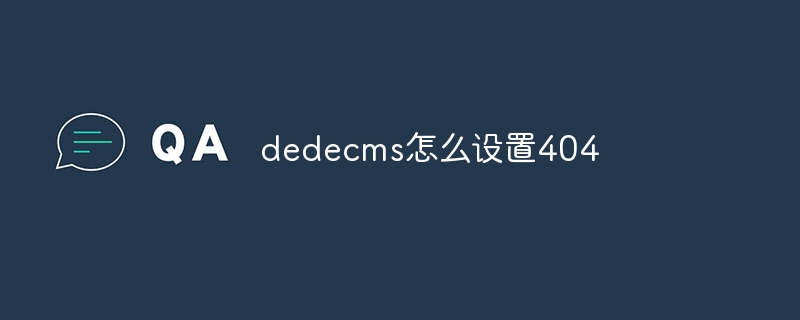How to set 404 in dedecms
dedecms Steps to set up 404: 1. Make a 404 page. This page should contain information about the error and some redirect links; 2. Save the 404 page as a .html file, and then upload it to Under the specific directory of the website; 3. Log in to the website backend, enter "System Management - Custom Page - 404 Error Page", find this tool, and then edit the 404 page created by the reference on the mobile template; 4. Use a non-existent URL to Test the 404 page.

The operating environment of this tutorial: Windows 10 system, dedecms version 5.7, dell g3 computer.
As a webmaster who owns a DreamWeaver website, you may have encountered the problem of 404 pages. When your visitors visit your website, sometimes a 404 page will appear for some reasons. This page does not meet the visitor's expectations, so we need to optimize it.
First of all, the 404 page is not the bad page we imagined. In fact, it represents a "mysterious" page. It may also be that your website has been attacked. Therefore, when making a 404 page, we need to consider the visitors' perspective and provide them with a friendly solution.
dedecms Steps to set up 404:
1. Prepare a 404 page
First, you need to create a 404 page, which should contain relevant errors information, as well as some redirect links to allow visitors to continue browsing your website.
2. Upload the 404 page
Save the 404 page as a .html file, and then upload it to the specific directory of the website, usually 404.html or 404.htm in the root directory document.
3. Set up the 404 page in the backend of the Dreamweaver website
Log in to the backend of the Dreamweaver website, enter "System Management->Customized Page->404 Error Page" and find this tool. Then edit the reference created 404 page on the mobile template.
4. Test the 404 page
Finally, make sure the 404 page can run normally. You can test this 404 page by entering a non-existent URL in the address bar.
In the process of setting up the 404 page, we need to pay attention to the following key points:
- Reasonable design of the 404 page can increase the visitor's stay time, pay attention to the design and content quality of the page;
- Give appropriate prompt information to let visitors know the reason for their problem;
- Provide links or search boxes to help visitors continue browsing your website;
- Respond to errors quickly, otherwise the user experience will be affected.
The above is the detailed content of How to set 404 in dedecms. For more information, please follow other related articles on the PHP Chinese website!

Hot AI Tools

Undresser.AI Undress
AI-powered app for creating realistic nude photos

AI Clothes Remover
Online AI tool for removing clothes from photos.

Undress AI Tool
Undress images for free

Clothoff.io
AI clothes remover



